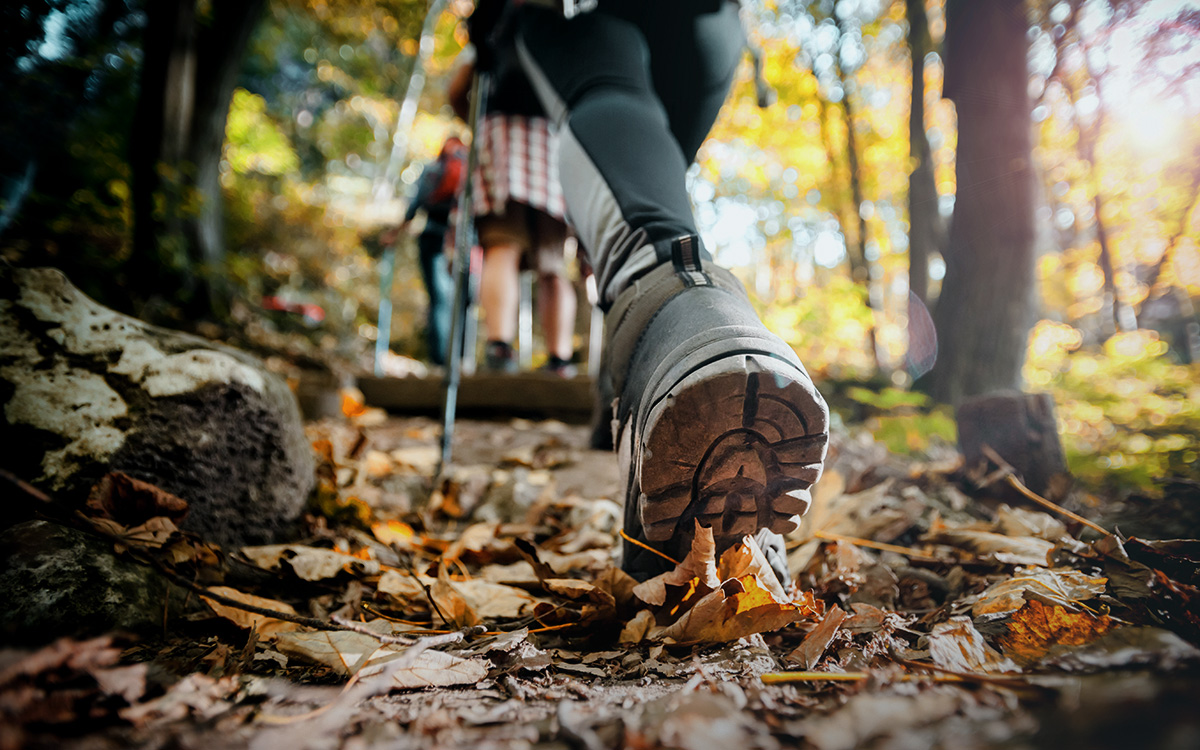Cushioned Shoe Insoles for Unintended Activity
When footwear is used for a purpose outside of its original intent, cushioned shoe insoles give customers the flexibility they need.

Hiking boot designers and developers know that durability, comfort, and support are critical to meet the demands of varying distances and terrain – and the right hiking boot insoles go a long way to providing an optimal customer experience whether they’re hiking on flat trails or rugged mountain paths.
However, insoles for hiking shoes and boots can often take a backseat to other footwear features, like weight, protection, stability, and durability. Customers are looking for benefits supported by these features, such as:
Hiking boot and hiking shoe designers and developers have a challenging task – not only does every person have different gaits, foot strikes, foot shapes, and arch support needs, but customers buying hiking footwear are engaging in many different types of hiking and outdoor activities that cover a range of distances, ruggedness, and terrain.
Someone who is walking along a flat trail for a few miles with their dog each day will have different needs than someone who is attempting the Appalachian Trail for the first time.
So if those two people purchase the same hiking boot, it stands to reason that the boot should be designed in such a way that it can meet their individual needs, even though they are vastly different.
The best hiking boot insoles can help prevent blisters, plantar fasciitis, or ankle pain by providing the right amount of comfort and support. Hiking enthusiasts tend to have go-to boot brands, and that’s not by accident. Knowing you can get up and down a mountain without pain or discomfort is invaluable to the outdoor experience.
Your brand can deliver that experience to your customers with the right hiking boot insole.
What are the Best Insoles for Hiking Boots?
It should come as no surprise that there are appropriate insoles for every type of shoe. Standard flat insoles are designed to accommodate anyone who purchases that footwear – but if you infuse biomechanics research into insole design, you can ensure they will not only work for the majority of wearers, but they will accommodate the specific activity for which your footwear is intended – like hiking.
What does that mean? For hiking boots and shoes, specifically, we conduct biomechanics research that examines particular responses and data from the body during a simulated or real-world hiking activity:
These data points help us develop a highly-customized insole design based on real human movement.
Read More: What’s the Best Insole for…
For example, if we find that the majority of hikers tested have pressure points along the sides of the feet from frequent rolling, we would select an insole shape and material that can add support in the right places and redistribute pressure for improved underfoot stability.
How We Create an Optimal Insole for Hiking Footwear
Delivering an exceptional customer experience on the trail is all about comfort, performance, and support.
When you select an insole for your line of hiking boots and shoes, it should have certain features that are backed by data and biomechanical research, so you know your hiking customers will have a positive experience.
These features include:
Developing Hiking Footwear Insoles With the Best Technology
Yes, technology is a big component of designing and developing the best insoles for hiking boots and shoes – as well as any shoe line!
Our approach to insole design and development is scientific and technical, and examines some core functionalities of the insole that we determine through extensive research and testing:
Ergonomic Science
We’re able to apply human factor data from more than 120,000 3D foot scans to improve gait, stability, and biomechanical efficiency, all in one ergonomic insole. Ergonomic science helps create insoles for hiking boots that provide the right level of support without compromising on comfort.
Comfort Research
We collect data from plantar pressure mapping, which identifies common pressure points and hot spots, as well as psychometric testing to quantify comfort levels while hiking. Plus, our open-cell PU foams mimic human foot tissue, adding another layer of comfort during a hike.
Balance & Endurance Testing
We use 3D motion capture to track the body’s center of mass in real-time and combine that data with stability and balance analysis. When designing and developing insoles for hiking boots or shoes, we apply this technology to ensure optimal performance.
We can confidently deliver a comfortable and supportive insole for a majority of hikers by following a data-driven design based on how people actually move during that activity.
Like many other activities, hiking can be a high-impact, high-demand activity that places a lot of stress on the foot. Without the proper insoles for hiking boots and shoes, you risk your customers experiencing pain, discomfort, or even fatigue during their hike.
When footwear is used for a purpose outside of its original intent, cushioned shoe insoles give customers the flexibility they need.
Our proprietary shape algorithm used for the INSITE® Contoura® insole combines the science of custom orthotics with modern footwear design.
If you’re wondering, “Do I need arch support?” you’re not alone – the need for arch support, and what type, can be hard to determine. Here’s what you should know.